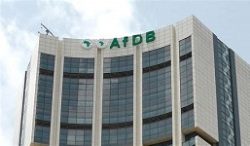A new report produced by the African Development Bank says the Eastern African sub-region’s economy will grow by 4.9 percent in 2021.
“The region’s economic growth is expected to recover to an average of 4.1 percent in 2021 and further to 4.9 percent and 5.6 percent in 2022 and 2023 respectively, from the 0.4 percent posted in 2020.,” said The report, the East Africa Economic Outlook 2021. The report reviewed the economic performance of 13 countries: Burundi, Comoros, Djibouti, Eritrea, Ethiopia, Kenya, Rwanda, Seychelles, Somalia, South Sudan, Sudan, Tanzania, and Uganda.
“The slowdown in 2020 was driven by COVID-19-containment measures such as lockdowns and curfews and reduced external demand for exports of raw materials and lower tourism inflows. Shocks like floods and desert locust invasions affected performance of the agriculture sector. Contraction of economic activity hit businesses and livelihoods hard, increasing poverty and income inequality,” it said.
“COVID-19 could hold back progress on reducing poverty in East Africa. The pandemic has had
sharper impacts on the poor, with the number of people falling below the poverty line projected to
increase. COVID-related shocks have increased poverty in the region, with the share of people
living in extreme poverty rising to 35 percent in 2021, or 134.3 million human beings. All told,
COVID-19 caused 12.3 million people in the region—3.4 percent of the 2019 population—to fall
into extreme poverty,” the report said.
It also stated that in recent years the region’s public debt has risen, driven by a slowdown in real GDP growth, substantial nominal exchange rate depreciations in countries with a large share of foreign currency debt, emergency spending measures in the health sector, and reduced inflows of commodity revenues.
“East Africa’s external public debt, like that in many African countries, has become more market based and less concessional—increasing rollover risks because reduced foreign currency reserves, high interest expenditures relative to revenues, and limited refinancing access to international markets pushed several countries to enter the high risk of debt distress. Many of the continent’s most indebted economies are in East Africa, including four in debt distress,” the report stated.
“To stabilize public debt, countries must deal with debt related to state enterprises and contingent liabilities, clear domestic arrears, and improve debt governance and transparency. In addition, increased nondebt equity or donor-funded capital, along with innovative financing instruments and risk-sharing tools, must be explored to combine funding for East Africa’s development needs,” according to the report.

